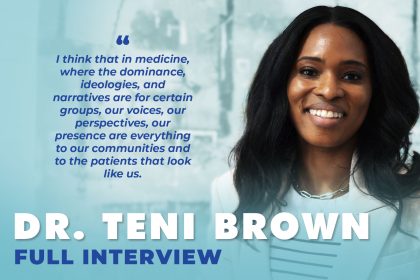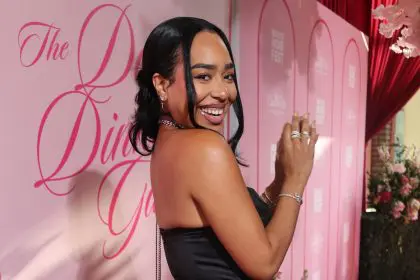Eva Coleman’s story resonates worldwide when talking about her breast cancer journey. After learning that she had stage one breast cancer, Coleman didn’t hang her head low or get defeated; instead, she fought and kept faith in God that things would be alright. With her mother, daughters, and tribe by her side, she did not have to go through her journey alone, and she’s inspiring and uplifting others to continue to fight.
Through Coleman’s journey, she learned about cold capping, which helps you retain your hair during chemotherapy treatment.
Coleman is a Telly award-winning producer with over 28 years of professional experience in television, radio, and newspapers in Dallas-Fort Worth. She is the lifestyle and culture editor for I Messenger Media LLC print and online publications and the communications director for Aubrey Independent School District. For over a decade, she served as executive producer of Frisco ISD-TV in Frisco, Texas.
What did you try that was different and new that you had just heard of when you got into this circumstance?
The hair that’s still on my head is my hair. Some people say not everybody loses their hair, but [most] people do with chemotherapy drugs. My doctor is the one who told me about this thing called cold capping, and the way she presented it to me, she was like, “If you’re concerned about your hair, you can just do cold capping.” I told her I didn’t care about my hair, [which] was not my concern. I didn’t care about being bald; [I was] just trying to live. My mom was sitting over there, and her little antennas went up, and she asked what it was. It’s a process where you can try to retain your hair, and after that, my mom had a conversation with me. She wanted me to do this cold capping thing, which I had never heard of. Of course, I got online and did some research, and it’s a process where I wore these thermal caps on my head during my chemotherapy sessions. They were super cold, minus 35 degrees, and they’re rotating these caps on my head at intervals. In the beginning, it’s every 15 minutes, and then it goes down to every 20 minutes. [They] throw the hair follicles into hibernation, so the chemo drugs don’t impact them.
You have some doctors who are critics of this process because they say that they want the chemo to treat the whole body, and in this process, you’re preventing it from treating certain parts of your body. I decided to do it because of my mom. I didn’t care about being bald. My mom has no filter and said, “Baby, let me tell you, being bald won’t be a good look on you.” She said that to me. My mom would say that to anybody. She came up and told me that she, my dad, and my brothers [would] pay for it. They didn’t want that financial part to [burden] me, so my family stepped up and paid for my cold capping. People ask how much it costs, but I used [a] company called “Chemo Cold Caps” in Dallas. It’s a system where they just give you a cooler, these thermal caps, and some racks, and they give you all of the things you need, from scissors to plastic bags to spray bottles, because you have to saturate your hair. It’s a whole process of stuff you have to do and follow these steps, but if you do it to a tee, studies show that most women retain at least 80% of their hair. I would have to go the day before and pick up dry ice, and then the morning of chemotherapy, I had to pack that cooler. These caps were kept on dry ice, and for them to keep their consistent temperatures, that’s why [they are rotating] on and off your head. With this system, you have to have what’s called capping buddies, which is someone there to help you. My hairstylist, who was also like a big sister to me, was one of my capping buddies who was there the entire time, all the way. My youngest daughter was a capping buddy. I had another friend who came in on one of [my four chemo days], but it was mainly my daughter and my stylist. It was an eight-hour process, and it was very grueling because the infusion time for my chemo was just two and a half hours, but the cold capping time was an eight-hour commitment on chemo day, and I had to do this four times.
I started cold capping 50 minutes before the first drug went in and continued rotating that cap for the two and a half hours of infusion time I had, then continued cold capping for four hours after the last drug finished. It’s a whole day of cold capping [spraying my hair and moistening it]. My hair had icicles on it. My scalp had icicles. It’s a massive brain freeze every time, just like when you take an ice bath: you step in, and it’s so cold, and then your body adjusts to it. It’s the same for cold capping, but in this instance, by the time your body adjusts, it’s time to put a new one on, so it was this cycle of brain freezes. I did it, and it worked.
We followed the instructions to the tee. Other systems are used throughout the country. Some have one where you can plug in a hole [and] keep the cap at a consistently cool temperature, too. [The system] was $430 a month, and I had two chemotherapy sessions in one month. I paid a little over $1,200 for what it costs, but people will look and not balk at that because it’s not covered by insurance; it’s considered cosmetic. But look at how much people spend on wigs, head wraps, and all types of things like that. In the grand scheme of things, I still have my hair. You have to treat it like baby hair; you can’t do much [to it]. [It] was about six months when I couldn’t do much to my hair. I couldn’t use any harsh chemicals. I couldn’t blow-dry it or flat-iron it. I was rocking these little two-strand twists and keeping it moving.

















